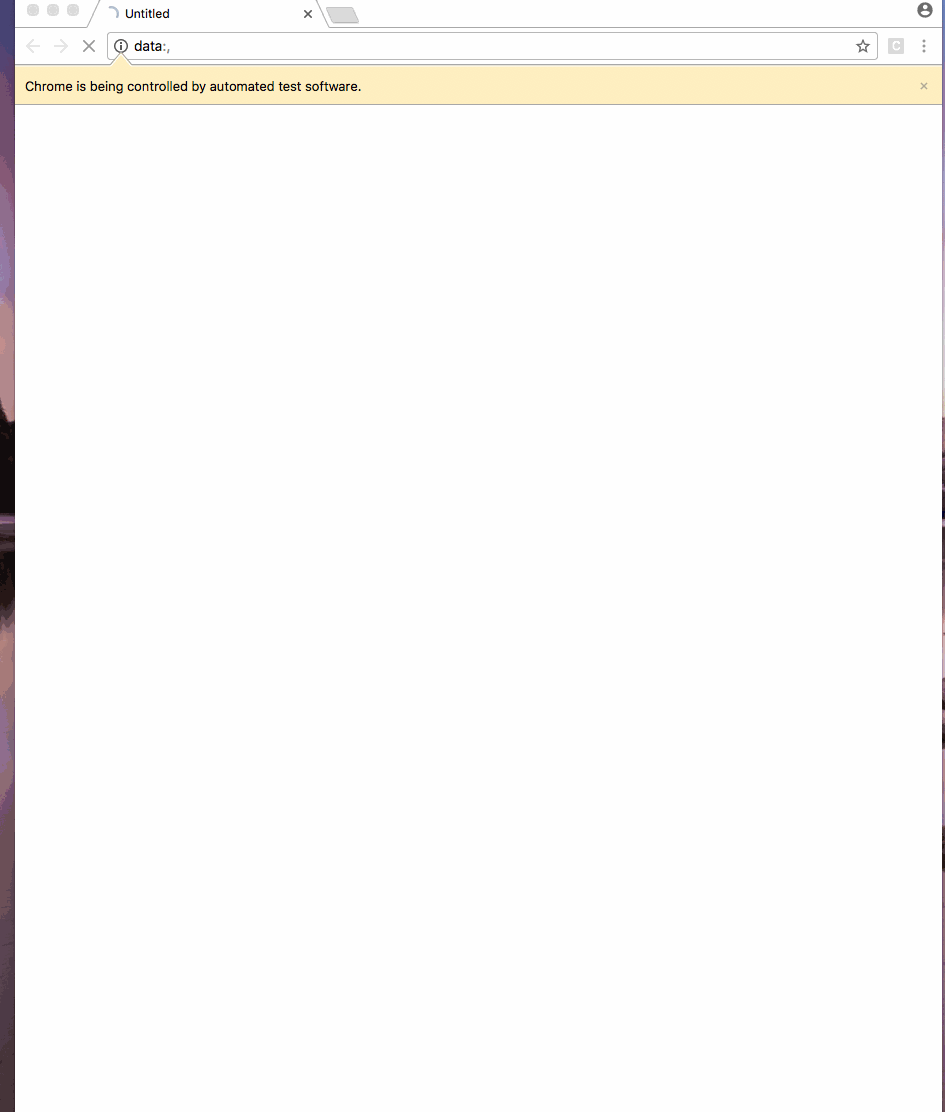

- #Headless chrome full page screenshot how to
- #Headless chrome full page screenshot install
- #Headless chrome full page screenshot code
- #Headless chrome full page screenshot mac
How to Take Full Page Screenshot in Bulk from Multiple URLs? But if you know programming, then you can create a custom name as well. By default, the script saves the screenshot by renaming them according to the position it appears in the text file. You can lave it running if you have more than 100 URLs, and then it will open each URL one by one and will save the screenshot in the specified folder. But for this post, I will be using it on Windows.
#Headless chrome full page screenshot mac
You can run the automation script mentioned in this post on Linux and MAC tool. The script is in Python and only needs a few dependencies, and then you are all good to go. The script basically automates Chrome in headless mode and takes full-page screenshot of all the websites you supply. There are some paid online services which does it but for free, you have got the best option with the script. There is literally no way to bulk screenshot webpages from URLs. The script uses a text file to fetch URLs to take screenshot and saves all the webpage screenshots in PNG format. In this post, I will talk about an automation script that uses Chrome internally to take full webpage screenshots.

Read more from David Bekerman at Imperva.This tutorial explains how to take full page screenshot in bulk from multiple URLs. For the legitimate developer, that means you can use its features without fear of 404 errors.

It is not common practice for servers to block Headless Chrome. While this doesn't necessarily invite scripting attacks, it does allow for easier creation of web crawlers that can mass scan sites for vulnerabilities. You can bypass XSS restrictions by directly accessing a site in headless mode. The same features that make Puppeteer so useful for web indexing make it a potential tool for hackers. Eric Bidelman goes into more detail here. Crawling websites with a headless browser is a good way to get all the relevant DOM information, not just what's in the HTML file. If a search engine wants to collect data about a site, it can no longer just read its HTML page. This presents a problem for web indexing. Web pages these days are written mostly in JavaScript or JSX, with the HTML page serving as a blank canvas for Angular or React to add content. Going into detail about testing with Puppeteer is beyond the scope of this article, but Akshay Kadam wrote a tutorial for Sitepoint about end-to-end testing with Puppeteer and Yarn. Puppeteer lets us test our front-end server-side instead of client-side which is four times faster. Headless mode allows us all the functionality of our browser without the costly layout rendering, so it's ideal for setting up efficient tests. It will look like this (until Google changes their developer page layout or the contents of their Puppeteer page).ĭevelopers use Puppeteer to test the front end of their design and to do end-to-end testing. After running, you'll have a new file in your parent directory called puppetmaster.png.
#Headless chrome full page screenshot code
You can enter the above code into a JavaScript file - puppet.js - and run the file with node puppet.js. Puppeteer bundles all its necessary dependencies, so your json file will be about 400 lines long, and you won't need to worry about running any other terminal commands for it to work. It should add a node_modules folder and a package-lock.json folder to your parent directory.
#Headless chrome full page screenshot install
To install Puppeteer in your project, enter npm i puppeteer into the terminal. You'll need some version of Node to run Puppeteer. This article focuses on Puppeteer, a node library with an API that allows you to perform most browser actions in your code. There are APIs that let you access it in your JavaScript code. You aren't limited to the terminal window when browsing in headless mode.

If your terminal is displaying similar text to what's in the link, you've successfully accessed in headless mode. Even a simple page like has a pretty lengthy DOM, so I included the text at this link to avoid bulking up the article. Enter fullscreen mode Exit fullscreen mode


 0 kommentar(er)
0 kommentar(er)
